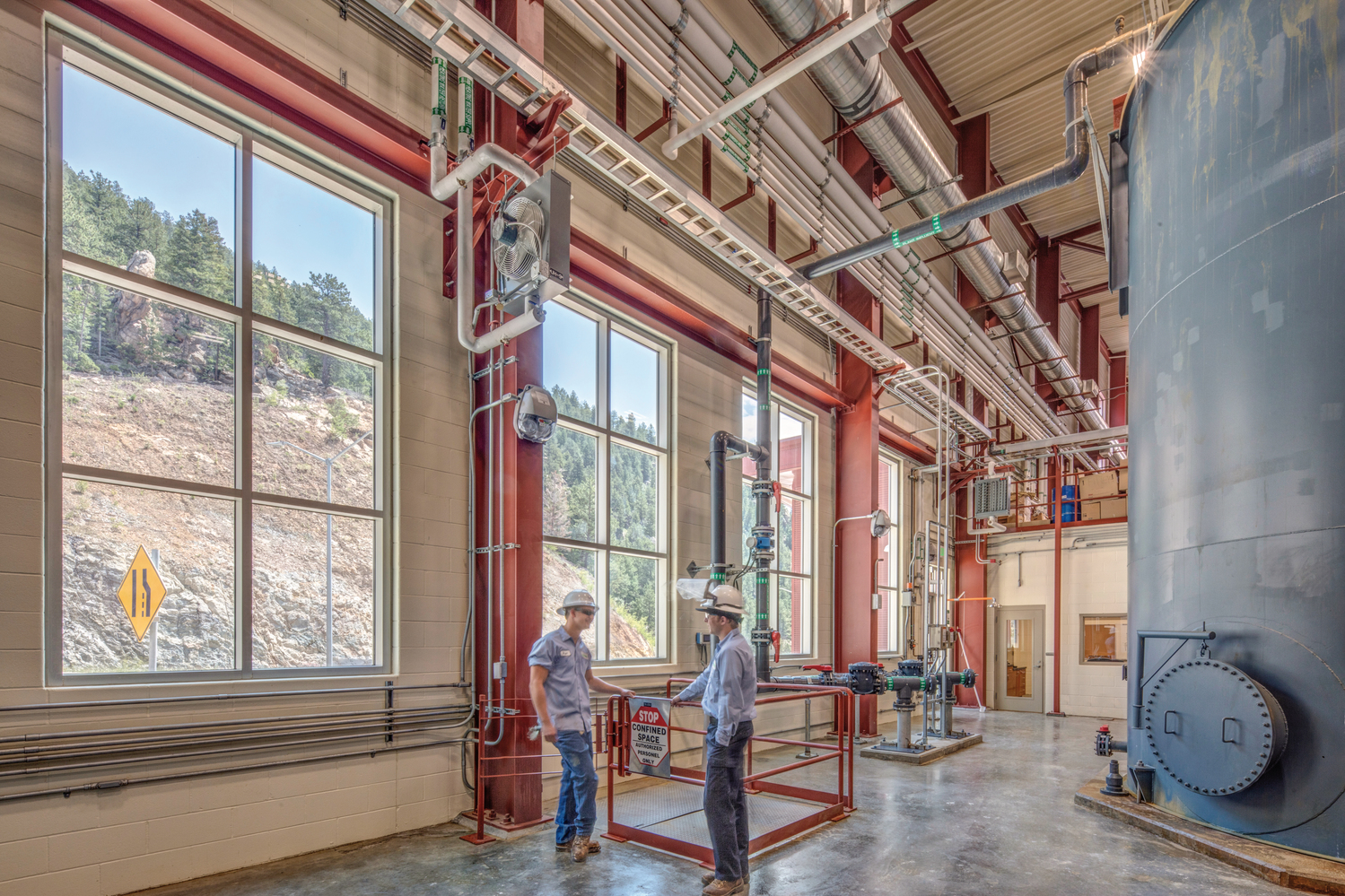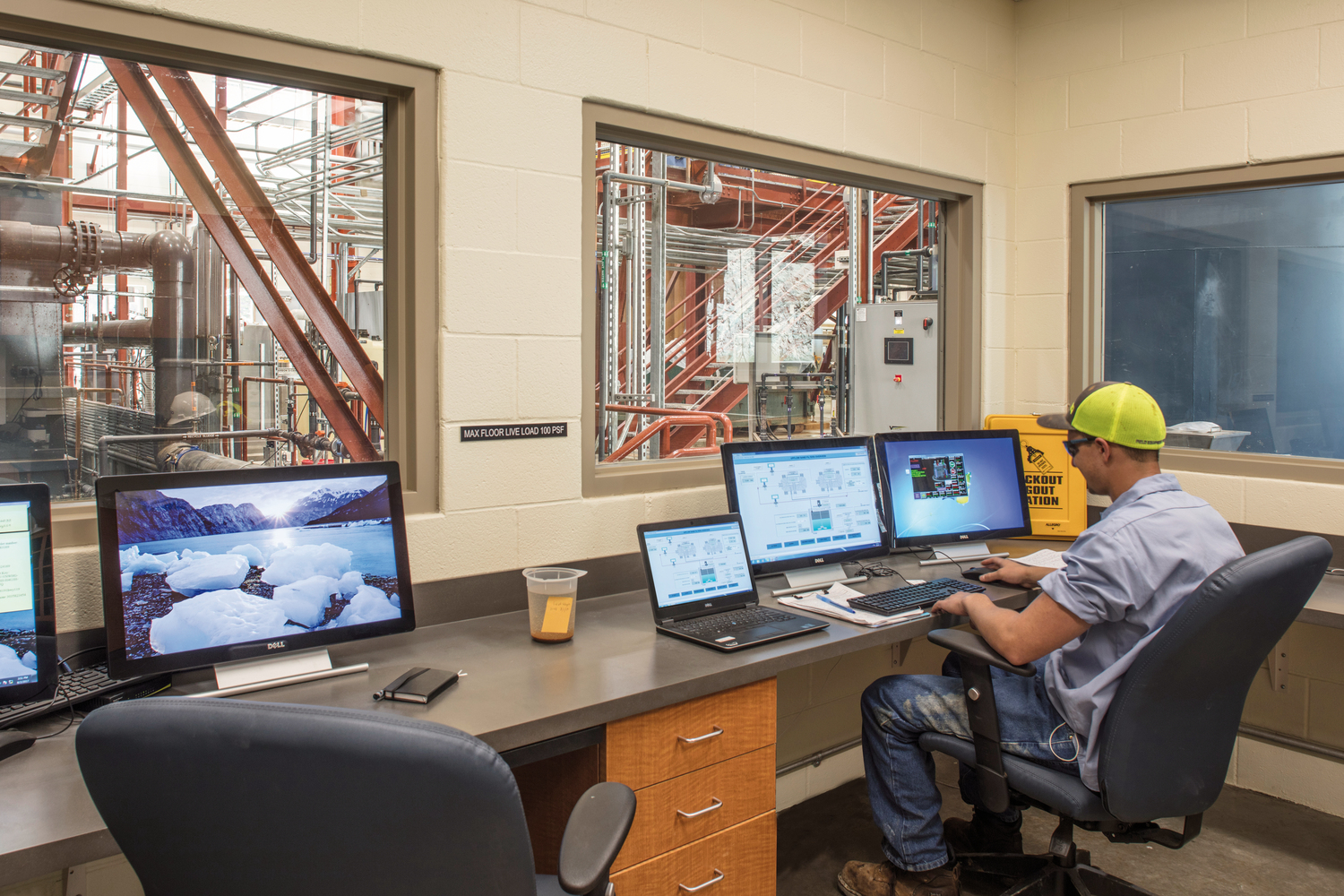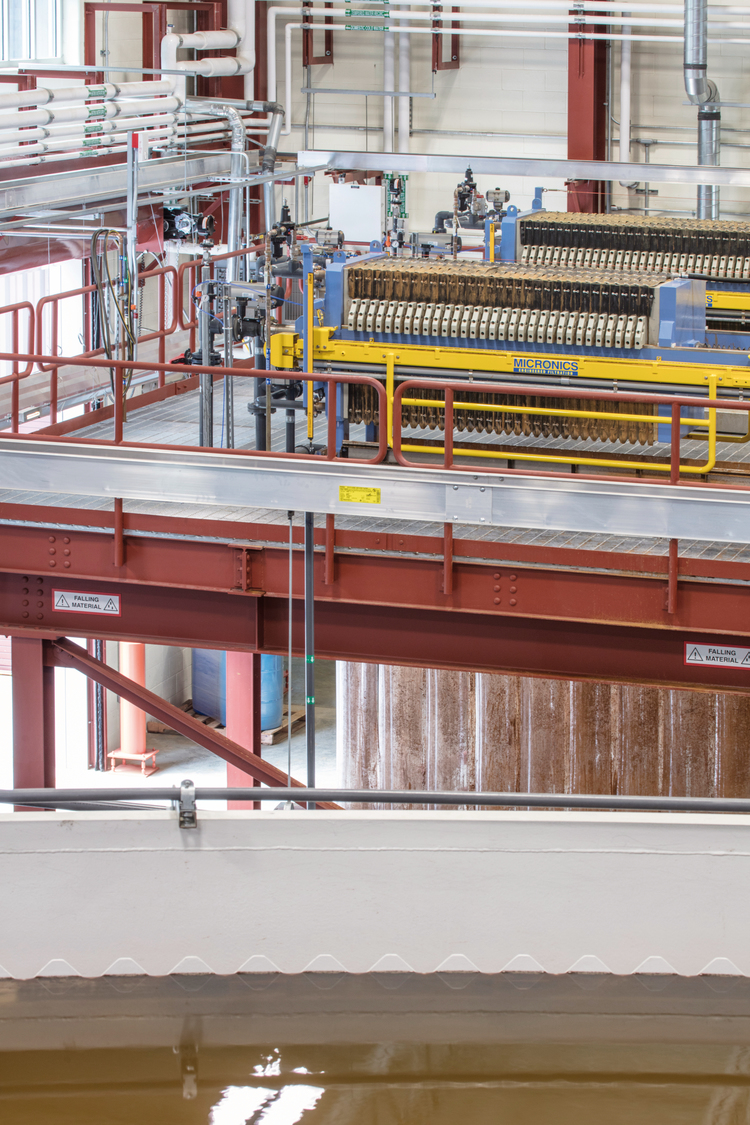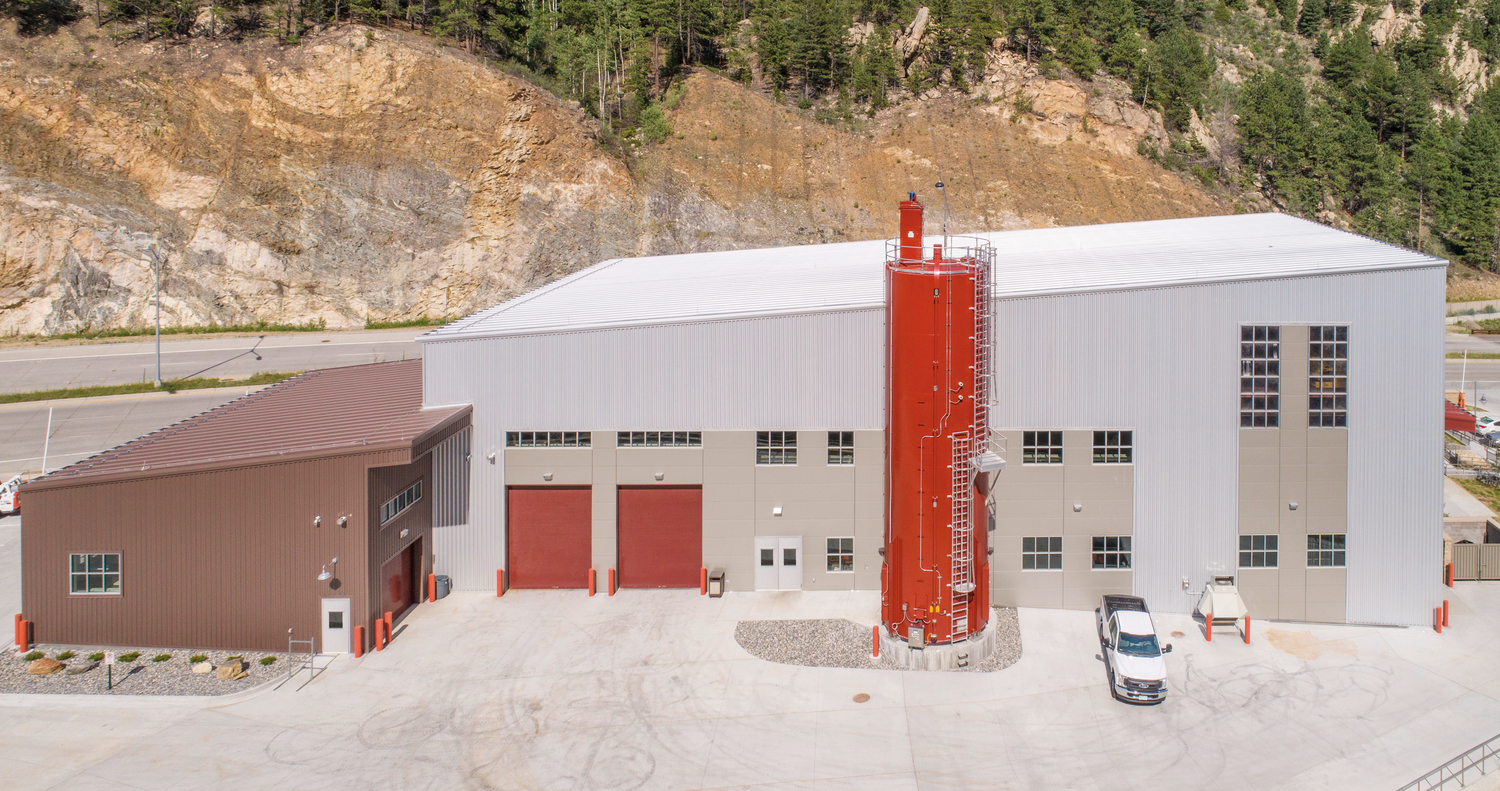Improving Water Quality in an Historic District
The project involved collaboration with the CDPHE and the US Environmental Protection Agency in meeting the state and federal goals established for this Superfund site. The site, developed by CDOT, is located within the historic district of Black Hawk. The state-of-the-art facility provides water treatment from historically contaminated mine run-off utilizing an automated, lime-based high-density sludge precipitation system. The system treats a design flow of 600 gallons per minute and improves drinking water quality and promotes the survival of several aquatic species that flow downstream.
The general building massing and two-story height were established to accommodate the needs of the process equipment and to meet the design standards of an historic district. A 2-ton bridge crane and hoist runs along the entire length of the process area to service the processing equipment, tanks, clarifier, filter presses and the below-grade influent and effluent water storage vaults.
The facility includes a water quality laboratory that supports the treatment process. It provides real-time analysis and evaluates process parameters such as measuring pH levels, oxidation reduction potential, and spectrophotometry to provide colormetric analysis and look at turbidity. The lab provides a water purification system to aid in testing that replaces both distillation and conventional deionization units.
The maintenance area contains a high-bay area for vehicle storage and laydown area for repairs of large equipment. It is located adjacent to the process area so that the bridge crane can bring faulty equipment directly to the laydown area.
Energy efficiency systems are built in the design with a high efficiency condensing modular boiler plant and air conditioning is not needed in the process or maintenance wing due to the large quantity of cold process water in the space and its resulting cooling effect. Large windows are incorporated for capturing natural daylight in the work environments and for the staff to observe the mountainous views.






